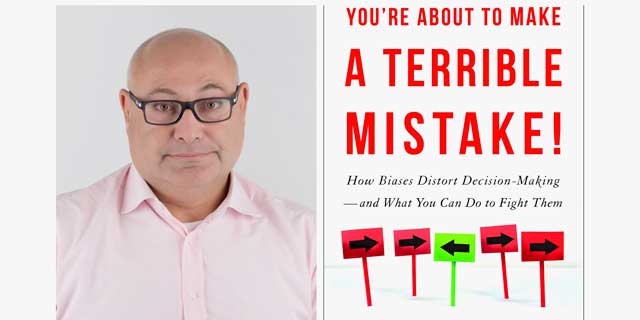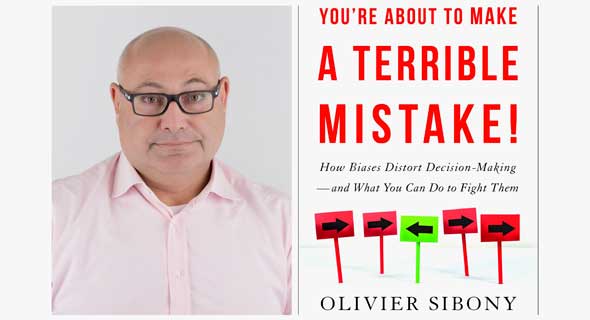
BiblioTech
CTech's Book Review: Examining the methods to our madness
Hanan Zakai, VP of Customers & Division Manager at CodeValue, shares insights after reading “You're About to Make a Terrible Mistake” by Olivier Sibony
Author: Olivier Sibony
Format: Book
Where: Home
Summary:In this book, author Olivier Sibony encapsulates the major cognitive biases that have an enormous effect on decision-making from your daily routine assignments and up to establishing multi-year strategic plans. These biases are consolidated and categorized into major biases and fallacy groups and, even more interesting, are the processes and methods provided by the author to diminish these biases and improve our decision-making.
Important Themes: Alexander Pope wrote: “… to err is human…”, and falling into cognitive biases is, too. Business history is filled with colossal disasters that were performed by some of the most successful and smart managers. The easy way is to attribute it to arrogance, optimism, and other character attributes yet there is an inherent ambivalence since the same managers are responsible for case study success in the past. This is the baseline for the book to grasp and truly understand that there are much more than character flaws that led to those decisions that cognitive biases and fallacies pave the paths to these pitfalls. The main theme is the fact that there is a method to our madness. Cognitive biases result in recurring patterns of strategic error that we can learn to recognize. Olivier Sibony scans, explains, and categorizes the main cognitive biases and fallacies putting them into five families: Pattern Recognition, Inertia, Action-Oriented, Interest, and Social.The core message is that we shouldn’t try to overcome them, we should make efforts to produce better choices. These choices can be achieved by processes and methodologies, broken into 40 practical methods that improve one’s decision-making.
Related Stories
What I’ve Learned:
Nobody is immune, even after vaccination and a booster (if we’ll borrow from the Covid-19 jargon). As knowledgeable and smart as one is, there is still no insurance for not being sent off the road of bias.Smarter and capable managers will find even better ways to “prove” that they haven’t fallen into a trap when they slide down the fallacy road. After all, it’s natural and human as Daniel Kahneman explains so well in his masterpiece, “Thinking, Fast and Slow”.
Biases are “social’ and they rarely come alone. Even though Sibony divides the biases and fallacies into groups, they rarely come one at a time. Therefore, even if you’re tackling one obvious bias the others will take you off course, that is the reason that there is no silver bullet to “kill” them all.Two parallel lines can meet… one of the most interesting parts is the description of the joint research of Professor Daniel Kahneman with his Heuristics and Biases, and Professor Gary Klein, the father of natural decision-making, AKA ‘gut feeling’. These opposites’ joint research findings reflect that in circumstances when scenarios include regularity. The individual can learn the outcome of his decisions, the gut feeling will do the trick, and if we want to take it up to 30,000 feet, experience does count.
‘Fast’ can really make your organization furious. Process is a virtue. Critiques: In his effort to create both complementary and practical, the book doesn’t always drill too much and provide empirical data and “named” use cases to establish robustness to the ideas. Yet on the other side, this is maybe its greatest virtue of “practicality”. Who Should Read This Book:Any manager and leader that wants to improve her/his and his team’s capabilities and performance.
